July 2016. Breakfast at Annie’s Lodge in Zomba, with a big French press of Malawian “Mzuzu” coffee. I took the leftovers in my travel mug when Miles, the driver from LTS, picked us up at 8 AM. We drove north on a sunny morning through what is getting to be familiar territory, through Songani, up over a low pass in the hills at Machinga Boma, then down into the valley of the Shire, until we reached the river town of Liwonde. At the junction of the road that goes north to Mangochi there is a big local market where people bring products from the surrounding area to sell.
At the market we met Peter Ngoma, an ecological economist, who was working on a study of the value of forest products coming out of the national forest reserves in the hills to the east, part of the upper watershed of the Shire River. His study was one of five studies or surveys we did in 2016 as part of an effort to improve the information about biodiversity and natural habitats that is available to government forest and water managers, and local communities, in the Shire River Basin. Our work is supported by funds from the Global Environment Facility (GEF), and is being implemented under a contract to LTS International, an international consulting firm based in Edinburgh, Scotland. It is a tiny component of the Shire River Basin Management Program, a large project funded by the World Bank and implemented by the Government of Malawi’s Ministry of Agriculture, Irrigation, and Water Development.
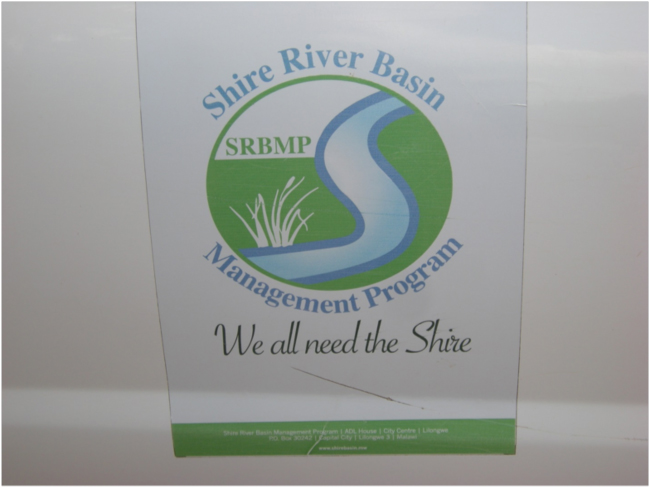
Logo for the Shire River Basin Management Program on the door of a project vehicle, Annie’s Lodge, Zomba
The day was already getting hot in the thronging market when we arrived, and Peter was interviewing a man selling baskets, hats, and mats made from wild palm leaves. After listening in on Peter’s interview for awhile, we – Daulos Mauambeta, deputy team leader of this project and I – decided to wander through the market to see what other products coming from the nearby forest reserves we could find. It was a long list: firewood, charcoal, poles for house construction, thatching grass, household items made from wood, bamboo, reeds, and palm leaves, and woodcarvings and crafts for the few tourists who might show up here. We didn’t see any mushrooms, wild fruits, or edible caterpillars, because these common forest products were not in season at the moment.
In an earlier story about this trip to Malawi, I described climbing to a site on Chikala Hill in the Liwonde Forest Reserve, where as we climbed we had a tutorial in how the local community uses the woodland and forest. We passed people coming down the trail with examples of all the products they harvest for free in this forest reserve: men with long bundles of thatching grass, or hoe handles cut from the base of several species of trees where the root bends and sends out a straight upward shoot; women with bundles of firewood on their heads bigger than they were; other men with rough-cut planks destined for doors, windowframes, or furniture. In a few places along the trail we saw where traditional healers had dug for medicinal roots, or stripped sections of bark from trees that were part of the indigenous pharmacopeia. All of these products and more were being sold at the Mangochi turnoff market.
——-
Peter’s study, which was completed many months later, revealed important information about the value of these forest products to the local economy. After visiting a dozen markets on all sides of the three main forest reserves in the area, he found that products from the nearby forest reserves make a large and significant contribution to the livelihoods and economy of the rural population. Gross economic value, and food-purchasing value, suggest that the contribution is around 20-25% of the local economy. Charcoal is by far the largest component of the forest-based economy, with firewood the second most important product. Together these biomass fuels account for 82% of the total value of forest-derived products sold in the area. A “pie chart” from Peter’s study shows the percentage contribution of various forest products and highlights the dominance of charcoal and firewood.
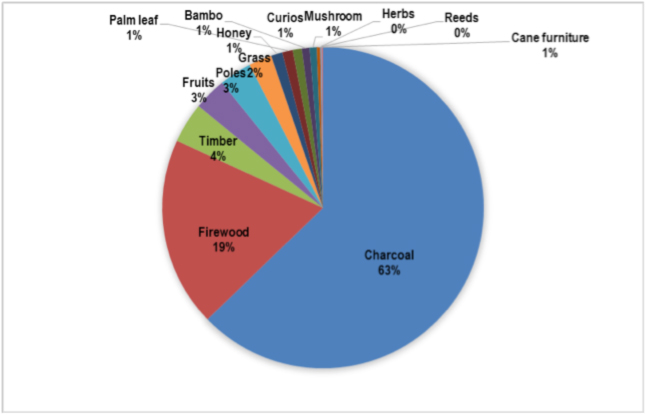
Relative contribution to total gross economic value of various forest products from upper Shire Basin forest reserves in 2016
Of the estimated 41,800 households living within 7 kilometers of the boundaries of the Liwonde and Zomba-Malosa Forest Reserves, almost 10% are involved in harvesting forest products, mainly for sale rather than for subsistence. In addition, around 5% of the households are involved in value-adding activities, using forest-derived raw materials to produce various products, while another 5% of the households are involved in retail sales of those products.
From harvesters through processors to retailers, the value of the various forest products increased along the value chain. The study found that raw materials collected by commercial harvesters from the forest reserves have a total annual gross economic value of 500 million Malawian kwatcha, or about US$700,000. The value added by making those raw materials into products was around 672 million Malawian kwatcha (US$933,000), and the retail value of the finished products was around 1.5 billion kwatcha (US$2.15 million) per year. Taken together, Peter’s study estimated that in 2016, total annual gross economic value of the forest products from Liwonde and Zomba-Malosa Forest Reserves was around 2.7 billion Malawian kwatcha, or US$3.8 million. This estimate, however, does not include the value to households that directly collect forest products for their own home consumption, nor the economic multiplier effects associated with the forest products through transportation and other related jobs. Forest products value chains appear to play a significant role in food security in the area: if just 40% of the total economic value of the forest products was used to buy maize for household consumption, that would be enough of maize for more than 10,000 households, or 24% of the households in the area.
Another study we conducted in 2016, on the regeneration potential of miombo woodland at sites in the forest reserves, showed that in many places the woodland is not regenerating successfully because exploitation levels are too high. Unsustainable harvesting of trees for charcoal and firewood is the main threat. The economic dominance of these biomass fuels in the local forest-based economy drives the overexploitation of the forest, and until the harvesting of wood-based fuels can be controlled and sustainably managed, forest degradation will continue. This is a vicious cycle, destroying the natural woodlands that are the source of almost one-fourth of the local rural economy and that produce the ecosystem services, especially hydrological benefits, for all water users downstream in the Shire Basin. More energy-efficient cookstoves, and alternative fuels, including fuelwood and charcoal produced from managed woodlots rather than natural forests, will be required to reduce demand for firewood and charcoal to a sustainable level.
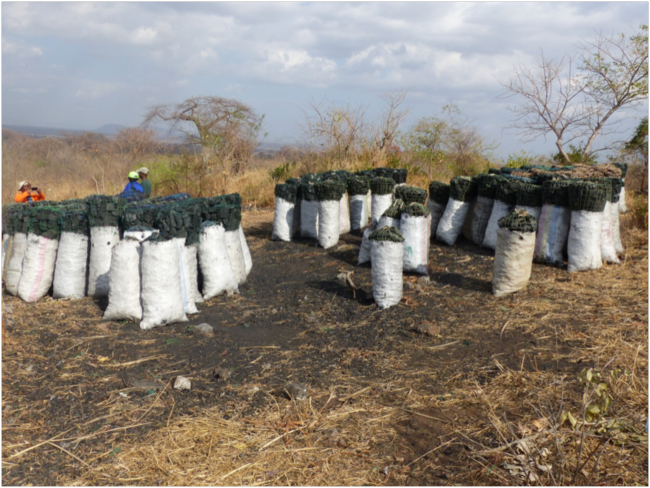
Bags of charcoal from a forest reserve waiting for shipment to market (Photo courtesy of Daulos Mauambeta)
——-
Daulos and I continued our wandering through the market. Just beyond the vegetable sellers – now mainly with piles of wonderful red tomatoes – and across from the area where a rainbow of bright fabrics for the ubiquitous sarong-like wrap skirts worn by women, called chitenge, were displayed on wooden racks, we found a traditional medicine seller. His medicines were three piles of plant material, graded by size: sticks, roots, bark, seeds, and leaves, plus a few miscellaneous curiosities, including a small bleached tortoise shell, and two tiny dried hedgehogs. This was a wild pharmacopeia of traditional medicine harvested from the nearby forest reserves. In the first pile I recognized the tuber we’d collected during a rapid botanical assessment at a miombo woodland site near Machinga in June 2015, and which I wrote about in a story called “Miombo Magic at Machinga Malawi.”
The plant was Dicoma anomala, of the plant family Asteraceae. It has a small tuber about the size of a peanut, with straggling attached roots, and it smells earthy, a bit carrot-like. If you google Dicoma anomala, you will find that its common names from Africa suggest its widespread traditional use as a medicine for stomach problems and also fever. A recent scientific paper evaluates its anti-plasmodial properties against the parasites that cause malaria. But even more interesting to me were its other purported “medicinal” properties. It has several names in the local Malawian languages. Palibekanthu is one name, which means “there is nothing,” or “no issues here.” Another is musyni apite: “let him go.” And another is ndzima, “darkness.””
We expressed an interest in this particular tuber in the jumbled pile of roots, leaves, seeds, and bark spread on an old maize bag, and before I knew it Daulos suddenly negotiated a deal with the proprietor of the natural pharmacy, a traditional healer. For 1,000 kwatcha each (about US$1.50), he would make us a concoction of this plant, supplemented with other traditional ingredients. This traditional dawa (medicine), he said, would protect us from trouble from other people. “Just put it in your pocket,” the medicine man explained; “No one will bother you!” It took some time for him to concoct such a powerful panacea, as we should have expected. We sat in his shabby shack for shade and watched as he mixed the medicine, like an ancient alchemist mixing a transmutative elixir. He picked out a twig of a certain kind of tree from his pile, cut off a small section, hollowed out the center with an old nail, and inserted a hedgehog spine; then he added seeds of a certain plant, and the Dicoma anomala tuber. A few salt crystals and a bit of the fresh green leaf of another plant were added as “helpers,” and all was wrapped in a piece of white cotton cloth, and a strip of white cotton was wrapped around that. The whole thing was tied up with a piece of fiber pulled from a Tyvek maize bag and the ends of the fibers were melted together with a match.
“Don’t show this to anyone,” the traditional healer instructed as he handed each of us the small white packet the size of a mummy’s thumb. “Just keep it to yourself, keep it in your pocket, and no one will bother you.”
I don’t know if the World Bank has a category into which it can factor this kind of “value.” Peter Ngoma’s study estimated that about 8% of local households were involved in harvesting “herbs” – wild traditional medicines – and their annual gross economic value was about 3.9 million Malawian kwatcha (US$5,500), per year, less than one percent of the total forest-based economy. There is much talk these days of “economic valuation” in discussions about how to conserve the benefits we derive from natural ecosystems. This is a reflection of the obsession of our current political-economic system with globalized markets, and the belief that a globalized capitalist market system will make the right decisions for the human future. I have my doubts.
The traditional healer who made our medicine that morning in the market at the Mangochi turnoff, living in a completely different world created by his own traditional worldview, was confident, I’m sure, that his medicine could protect us even from the evil people and evil spirits in the globalized world I inhabit. I’ll just keep my magic miombo dawa in my pocket, and hope he is right. I won’t tell anyone. I’ll just keep it to myself.
For related stories see:
- Miombo Magic at Machinga Malawi. June 2015.
- The View from Chikala Hill: Birds, Butterflies, and People in Southern Malawi. July 2015.
- A Strategy to Stabilize the Agricultural Frontier and Conserve Biodiversity in Malawi. April 2013.
- Women and Woodland Conservation in Malawi. April 2013.
- Restoring Miombo Woodlands for Village Development in Malawi. April 2013.
- Potoni Sacred Forest. September 2012.
- Xipamanine and Xiquelen: Biodiversity, Traditional Medicines, and Charcoal in Maputo Markets. September 2012.
- The Map is Not the Territory. September 2012.
Sources and related links:
- Mzuzu Coffee
- Shire River Basin Management Program
- Global Environment Facility (GEF)
- LTS International

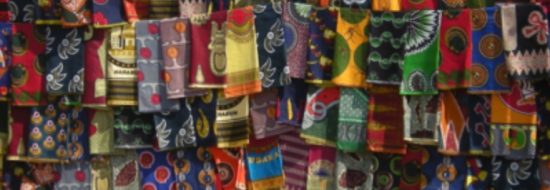
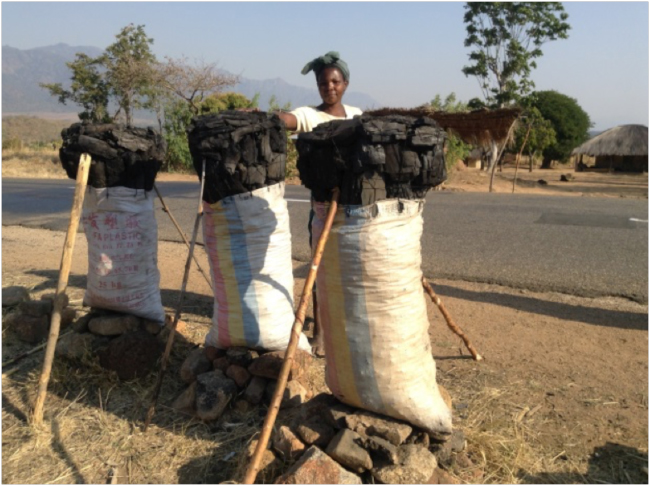
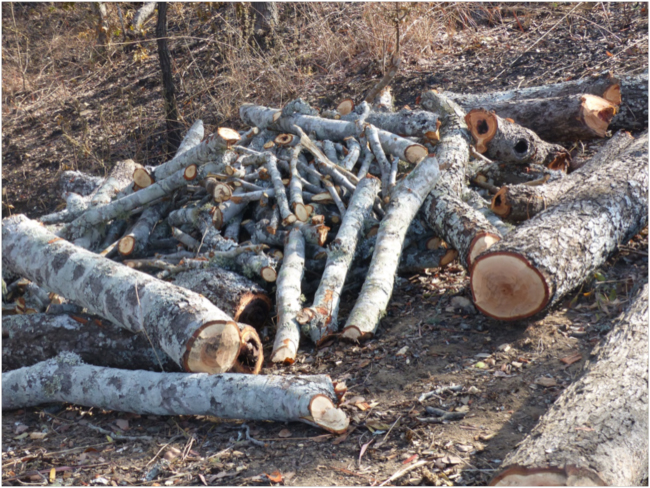
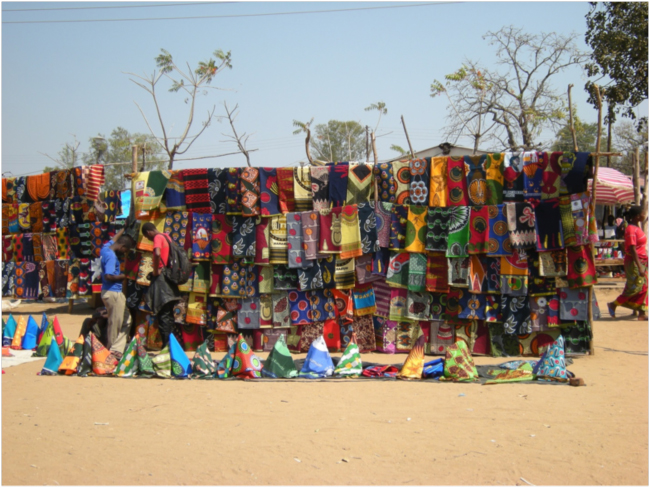




March 17, 2017 1:41 am
Such a refreshing view of life!
March 21, 2017 5:01 pm
Interesting and depressing. But what will they do when they have destroyed the woodlands?